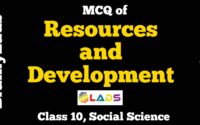MCQ of Federalism | Class 10 | Social Science | CBSE | Term-1 |
MCQ of Federalism, Class 10, Social Science, CBSE, Term-1
1. What is Federalism?
(a) Federalism is a system of government in which the power is divided between a central authority and various constituent units of the country.
(b) Federalism is a system of government in which the power is given to the central authority only.
(c) Federalism is a system of government in which
the power is given only to the various constituent of the country.
(d) Federalism is a system of a government in which the power is given to the majority community of the country
ANSWER: Federalism is a system of a government in which the power is divided between a central authority and various constituent units of the country.
2. Which of the following definition best explains the term, ‘Jurisdiction’?
(a) It is a term used for the legal knowledge of a citizen.
(b) The area over which some has limited legal right.
(c) The area over which someone has legal authority.
(d) All of the above.
ANSWER: The area over which someone has legal authority.
3. What was the change that took place in 1993 in Belgium?
(a) The constitutional powers were taken away from regional governments and were given to the central government.
(b) The regional governments were given constitutional powers that were no longer dependent on the central government.
(c) The regional governments were given constitutional powers that were co-dependent with central government.
(d) The constitutional powers were completely taken away from the central government and were given to the majority community.
ANSWER: The regional governments were given constitutional powers that were no longer dependent on the central government.
4. The Belgium shifted from ___ to ___
(a) Unitary, Aristocracy
(b) Federal, Republic
(c) Monarchy, Dictatorship
(d) Unitary, Federal
ANSWER: Unitary, Federal.
5. Tamil leaders want Sri Lanka to become ____ system.
(a) Federal
(b) Unitary
(c) Monarchy
(d) Autocracy
ANSWER: Federal
6. From the below statements, choose the one which correctly differentiates between Unitary government and Federal government.
(a) Under the unitary government, either there is one level of government or the sub-units are subordinate to the central government; In the Federal system, the state government has the power of its own and is not answerable to the central government
(b) Under the unitary government, the central government can pass on orders to provincial or local government; but in federal system, the central government can not order the state government to do anything.
(c) Under the unitary government, the state government has the power of its own and is not answerable to central government; in federal government there is one level of government or the sub units are subordinate to central government.
(d) Both options (a) and (b)
ANSWER: Both options (a) and (b) i.e., Under the unitary system, either there is one level of government or the sub units are subordinate to the central government; In the federal system the state government has power of its own for which it is not answerable to the central government.
And under the unitary government the central government can pass orders to provincial or local government; In federal system, the central government can not order the state government to do anything.
7. From the given sentences choose minimum two correct options which are the key features of federalism.
i. The federal system has dual objectives: to safeguard and promote unity of the country, while at the same time accommodate regional diversity.
ii. There is just one level of government
iii. Every tire of government governs different citizen, but each tier has same jurisdiction.
iv. There are two or more tires of government
v. Every tire of government governs the same citizens, but each tier has its own jurisdiction in specific matters of legislation, taxation, and administration.
vi. Sources of revenue for each level of government are clearly specified to ensure its financial autonomy
Choose the correct option
(a) ii, iv, vi, i
(b ) ii, iii, iv
(c) i , iv, v , vi
(d) i , ii, iii, iv, v, vi
ANSWER: i , iv , v , vi
You may also read MCQ of Power Sharing, MCQ of The Rise of Nationalism in Europe, MCQ of Resources and Development, MCQ of Water Resources, MCQ of Agriculture, MCQ of Development, MCQ of Sectors of Indian Economy for better understanding of the chapters and scoring higher in forthcoming exams.
8. Which country is an example of ‘coming together’ federation?
(a) Austria
(b) Switzerland
(c) Germany
(d) India
ANSWER: Switzerland
9. Which of the following country(ies) is/are an example of ‘holding together’ ?
i. Spain
ii. Bulgaria
iii. India
iv. Belgium
Choose the correct option
(a) i, and ii
(b) i,ii, and iii
(c) i, iii, iv
(d) ii, iii, and iv
ANSWER: i, iii, and iv
(Spain, India, and Belgium)
10. Which of the following subject(s) is/are a part of Union list?
(a) Foreign affairs
(b) Banking
(c) Commerce
(d) Both (a) and (b)
ANSWER: Both (a) and (b) i.e., Foreign affairs and Banking
You may also read MCQ of Power Sharing, MCQ of The Rise of Nationalism in Europe, MCQ of Resources and Development, MCQ of Water Resources, MCQ of Agriculture for better understanding of the chapters.
11. Which of the following subject(s) is/are a part of State list?
(a) Trade
(b) Education
(c) Banking
(d) All of the above
ANSWER: Trade
12. Which of the following subject(s) is /are a part of Concurrent list?
(a) Adoption
(b) Marriage
(c) Education
(d) All of the above
ANSWER: All of the above
13. Under which list Computer software is a subject?
(a) Union list
(b) State list
(c) Concurrent list
(d) Residuary
ANSWER: Residuary
14. Which government has the power to legislate on ‘residuary’ subjects?
(a) State government
(b) Local government
(c) Union government
(d) No government, its in the hands of citizen.
ANSWER: Union government (also known as Central government)
15 What is the percentage of Indians whose mother tongue is Hindi?
(a) 41%
(b) 40%
(c) 45%
(d) 40.5%
ANSWER: 40%
16. What was the base of creation of Nagaland, Uttarakhand, and Jharkhand as Indian states?
(a) On the basis of language
(b) On the basis of cultural and ethnicity
(c) On the basis of population
(d) On the basis of trade and commerce
ANSWER: On the basis of cultural and ethnicity
17. The creation of states based on particular criteria was the first and major test for democratic politics in our country?
(a) States according to religion
(b) States according to trade and commerce
(c) States according to religion
(d) States according to language
ANSWER: States according to language
18. The power sharing between the central government and state government is the base of the Indian constitution. The Parliament alone can not change this arrangement. Any particular change to it has to be passed by both the houses of parliament by at least some majority. What is the minimum majority needed?
(a) Two- third
(b) One- third
(c) 35%
(d) 50%
ANSWER: Two- third
19. What is the minimum number of seats reserved at local government elections for women?
(a) Five percent
(b) Two-third
(c) One- third
(d) Twenty seven percent
ANSWER: One- third
20. In which year the amendment in the Indian constitution occurred, which made the third-tier of democracy more effective and powerful?
(a) 1991
(b) 1993
(c) 1994
(d) 1992
ANSWER: 1992
21. When the data for Scheduled Languages of India was released, which language has the second highest percentage of speakers after Hindi?
(a) Gujarati
(b) Bengali
(c) Parsi
(d) Punjabi
ANSWER: Bengali
22. Which of the following is national language of India according to the Constitution of India?
(a) English
(b) Hindi
(c) Both (a) and (b)
(d) None of the above
ANSWER: None of the above
23. Which Indian state(s) use to enjoy its own constitution before the removal of article 371?
(a) Bihar
(b) Telangana
(c) Jammu and Kashmir
(d) All of the above
ANSWER: Jammu and Kashmir
24. What is the other name of Rural local government?
(a) Panchayat Samiti
(b) Zila Parishad
(c) Panchayati Raj
(d) None of the above
ANSWER: Panchayati Raj
25. What form of power sharing is also known as Federalism?
(a) Power sharing among political parties
(b) Vertical division of power
(c) Horizontal division of power
(d) Both (b) and (c)
ANSWER: Vertical division of power
You may also go through other subjects like MCQs of Science, Social Science & English for Class 10 in order to have a strong hold on the subject with an intent to score higher in the first term examination. Do share this post if you liked MCQ of Federalism. For more updates, keep logging on BrainyLads


